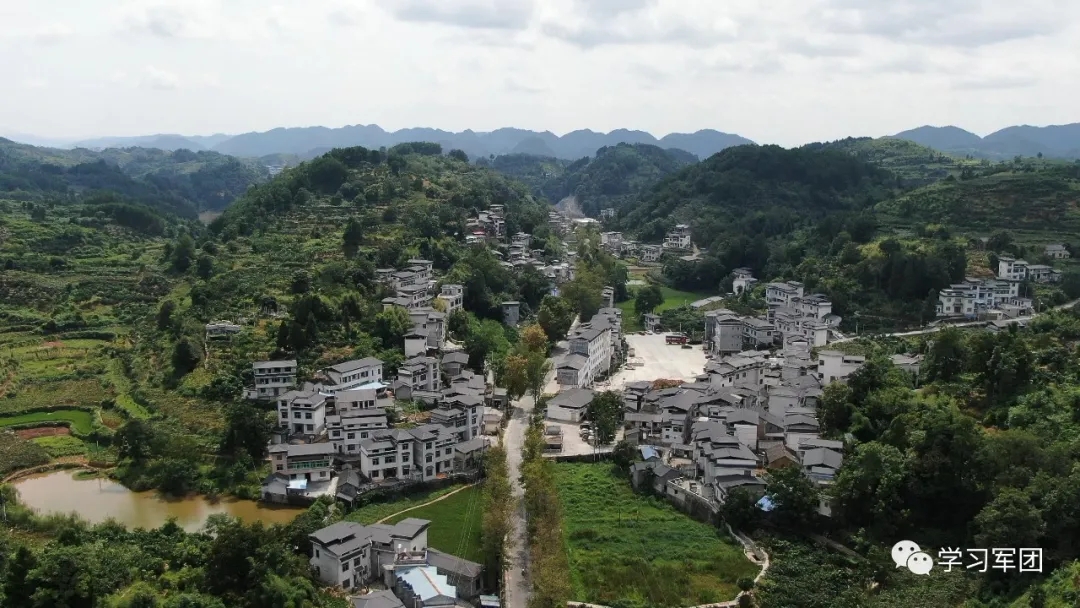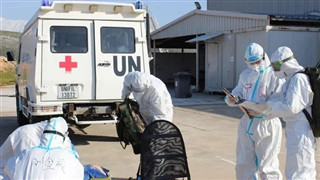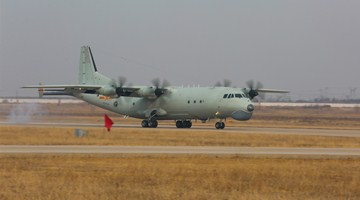Targeted Poverty Alleviation is the Key
The targeted poverty alleviation management system of the “Digital Xiangxi” Integrated Geographic Information Public Service Cloud Platform impressed the reporters deeply.
One can have a clear glimpse of poverty alleviation in Xiangxi prefecture via the management system. The system enables users to conduct searches, statistics, and management of detailed information of local poor people and poverty alleviation programs. It could also vividly display poverty relief achievements in the form of charts, which makes it possible to get information about poverty-stricken villages in a timely manner.

The picture shows the birds view of the Changputang Village. Changputang is a village hidden deep in Wuling Mountains in Xiangxi Tujia and Miao Autonomous Prefecture, Hunan Province . With the financial and technological assistance from the National University of Defense Technology (NUDT), the village has improved its traffic conditions by renovating dirt roads and building new roads with asphalt pavement with a total length of 9.7 km. (PLA Daily/Li Qian)
Leaders of NUDT explained that targeted measures are key to poverty alleviation. They decided to use advanced technologies to assist the local government in precisely identifying poverty-stricken households.
In 2016, an expert team headed by Professor Jing Ning from NUDT signed a cooperation agreement with the Second Surveying and Mapping Institute of the Hunan Province. After two years of hard work, the targeted poverty alleviation management system officially went online.
When accessing the webpage for farmer Shi Jinyuan and his family, a detailed information card for the poor household pops up on the screen of the computer. The card includes precise data about the structure, area, and available utilities of Shi’s house, as well as his family's incomes and records of participation in poverty alleviation programs over the previous years, educational backgrounds, labor abilities, pension, and medical insurances, as well as the area and location of the farmland owned by the family.
“All of these are attributed to the preferential policies put forward by the Party and the generous assistance from the PLA,” Shi said. In 2013, Shi’s family still lived under poverty line. Now, the family has not only shaken off poverty themselves but also helps five neighboring poor households get rid of poverty.
The system has helped achieve precise information-gathering of poor households, targeted poverty alleviation, accurate geographical data, and accurate statistics of poverty relief results, thus providing strong technical support for poverty alleviation.
“We’re glad from the bottoms of our hearts to see that our technological innovation could boost the poverty alleviation campaign,” said Wu Qiuyun, an associate professor and a member of the expert team from NUDT. As the dedicated liaison person for the research of the management system, Wu in the past two years has been to all the cities and counties in the Xiangxi prefecture. Once malfunctions of the system were reported in a place, he would drive there immediately to solve the problem.
So far, the management system has been widely used in poverty alleviation demonstration villages in places across Xiangxi, including Huayuan, Fenghuang, and Jishou.
Online Classes Shared by Rural and Urban Students
“Dear teachers and students, this is a treasure of our hometown — Yanling yellow peach. It helps people in Yanling County shake off poverty and get rich.” In an online interactive class themed “Treasures” attended by students from primary schools, He Yuxuan, a student far away in Zhongcun Yao Township in Yanling County, Zhuzhou City, Hunan Province, was introducing his hometown’s special products via live streaming.
In the same class, in the multifunctional hall of the Changsha Museum, Cui Miaoyue from the Primary School Affiliated to NUDT told stories about national treasures along the Silk Road.
More than 2,000 teachers and students from primary schools in Xiangxi, Zhuzhou, Yueyang, Loudi, and other places in Hunan Province watched the live broadcast of the online interactive class. Qu Hongliang, the headmaster of a primary school in the Liaojiaqiao Town, Fenghuang County, participated in the event together with five teachers in his school. “The move to accelerate joint construction and sharing of educational resources between urban and rural areas has significantly facilitated the education development in mountainous areas of Xiangxi,”
“We are working to create an education-oriented poverty alleviation model that is low-cost, extensive, sustainable, and replicable via online platforms so that children living in remote areas like Xiangxi can also enjoy high-quality educational resources,” said Liu Huiping, a teacher from the Primary School Affiliated to NUDT.
This urban-rural online interactive education model is stemmed from the successful educational concept of MOOC (Massive Open Online Courses) that NUDT has implemented for years. Through classes online, learners can have lectures, have quiz, conduct discussions, and take exams via the Internet without being confined to the limits of space and time. Such courses are open to all people, and everyone who has access to the Internet can enjoy high-quality educational resources.
After watching an E-course live broadcast for the first time, Pan Xiangyu, a primary school pupil in Yanling County, told her mother, “The little lecturer in the video is as old as me, I need to learn from her and dare to show myself.”
Six months later, this once-introverted little girl of Yao ethnic group appeared in the E-course live broadcast. She showed her talents and gave lectures about what she learned in the classes to other pupils.











